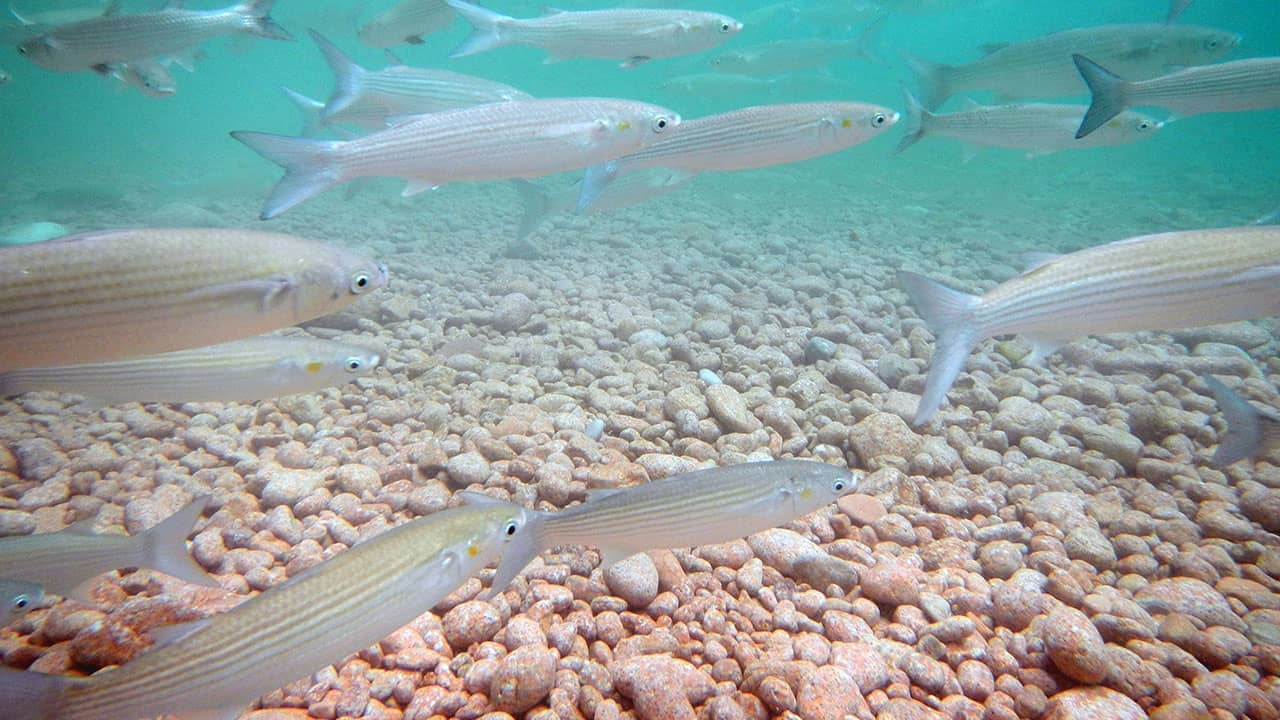***46th PGA Annual Forum and 4th Consultative Assembly of Parliamentarians for the Oceans, 26 - 27 March 2026, Mexico City. *** REGISTER HERE
Over 92 percent of the oceans are unprotected. |
|
Increasing human activity places significant and growing stress on marine ecosystems. Protecting 30 percent of the ocean through Marine Protected Areas is crucial to sustain the ocean's role in the social, economic, and environmental welfare of the world's growing population. |
Percentage of designated Marine Protected Areas (does not reflect implementation or management status)
Data Source: UNEP-WCMC (2021). World Database of Protected Areas, June 2022.

Climate health is directly linked to the ocean. The ocean absorbs nearly one-quarter of carbon dioxide emissions and roughly 90 percent of the excess heat generated by greenhouse gas emissions.
Even though the ocean is a vital buffer against climate change, greenhouse gas emissions are adversely affecting marine ecosystems, through warming, sea-level rise, acidification, deoxygenation, increased intensity and frequency of severe weather events, and shifts in species distribution and habitat suitability.
Strong ocean protections build and maintain ocean health, allowing for greater resilience and quicker recovery from climate impacts.
An important tool to address the negative impacts of human activity on the oceans is through the creation of Marine Protected Areas (MPAs), which are defined as areas of clearly defined geographical space, recognised, dedicated and managed, through legal or other effective means, to achieve the long-term conservation of nature with associated ecosystem services and cultural values.
Currently, MPAs account for only 7.92 percent of the ocean. Out of those 7.92 percent, just under 3 percent of the world’s oceans are highly or fully protected, though at least 30 percent is needed to build the resilience of ocean life to sufficiently adapt to climate change and buffer it from other threats.
The goal to protect 30 percent of the Ocean by 2030 is crucial to achieve healthier ecosystems and species, increase climate change mitigation through protection of coastal habitats that store carbon dioxide, reduce ocean risk from extreme weather events, secure livelihoods and food resources for all, raise abundance and diversity of species, create safe havens for threatened species and secure economic benefits from the ocean. By achieving this goal, the vision is to effectively prevent the further destruction of our oceans.

In partnerships with Fauna & Flora and the Paul Angell Family Foundation, a project of PGA’s Campaign for the Protection of the Oceans & Implementation of SDG 14 is the protection of 30% of the ocean by 2030 through the creation of Marine Protected Areas (MPAs) to ensure the health of both the ocean and those who rely on it.
Specifically, PGA’s work towards the protection of 30 percent of the ocean in Marine Protected Areas focuses on the implementation of SDGs 14.2 and 14.5, and their Indicators:
To advance these SDGs and their Indicators, PGA’s MPA Project aims to work with parliamentarians to achieve the protection of 30 percent of national waters in MPAs by 2030. |
In the Republic of Seychelles: During the second half of 2021, PGA Member Hon. Bernard Georges facilitated parliamentary support and engagement with the Seychelles Marine Spatial Plan Initiative. During a crucial time, Members of Parliament were able to engage with government representatives and various stakeholders to highlight the importance of well-managed MPA networks. This view of long-term sustainability and success of Seychelles’ MPAs was further informed by country-specific resources and technical support to bring Members of Parliament to the table.